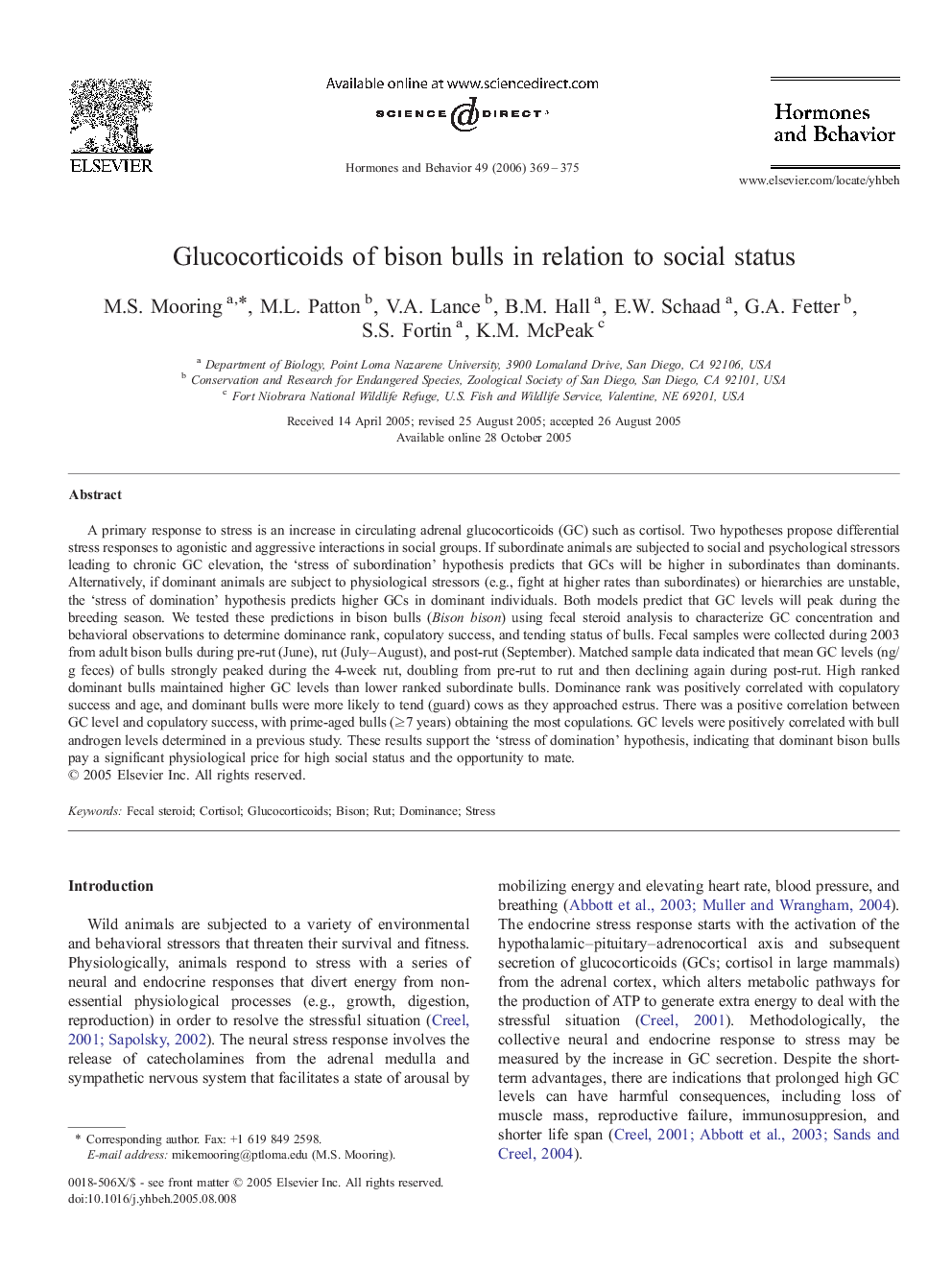| کد مقاله | کد نشریه | سال انتشار | مقاله انگلیسی | نسخه تمام متن |
|---|---|---|---|---|
| 323966 | 540831 | 2006 | 7 صفحه PDF | دانلود رایگان |

A primary response to stress is an increase in circulating adrenal glucocorticoids (GC) such as cortisol. Two hypotheses propose differential stress responses to agonistic and aggressive interactions in social groups. If subordinate animals are subjected to social and psychological stressors leading to chronic GC elevation, the ‘stress of subordination’ hypothesis predicts that GCs will be higher in subordinates than dominants. Alternatively, if dominant animals are subject to physiological stressors (e.g., fight at higher rates than subordinates) or hierarchies are unstable, the ‘stress of domination’ hypothesis predicts higher GCs in dominant individuals. Both models predict that GC levels will peak during the breeding season. We tested these predictions in bison bulls (Bison bison) using fecal steroid analysis to characterize GC concentration and behavioral observations to determine dominance rank, copulatory success, and tending status of bulls. Fecal samples were collected during 2003 from adult bison bulls during pre-rut (June), rut (July–August), and post-rut (September). Matched sample data indicated that mean GC levels (ng/g feces) of bulls strongly peaked during the 4-week rut, doubling from pre-rut to rut and then declining again during post-rut. High ranked dominant bulls maintained higher GC levels than lower ranked subordinate bulls. Dominance rank was positively correlated with copulatory success and age, and dominant bulls were more likely to tend (guard) cows as they approached estrus. There was a positive correlation between GC level and copulatory success, with prime-aged bulls (≥7 years) obtaining the most copulations. GC levels were positively correlated with bull androgen levels determined in a previous study. These results support the ‘stress of domination’ hypothesis, indicating that dominant bison bulls pay a significant physiological price for high social status and the opportunity to mate.
Journal: Hormones and Behavior - Volume 49, Issue 3, March 2006, Pages 369–375